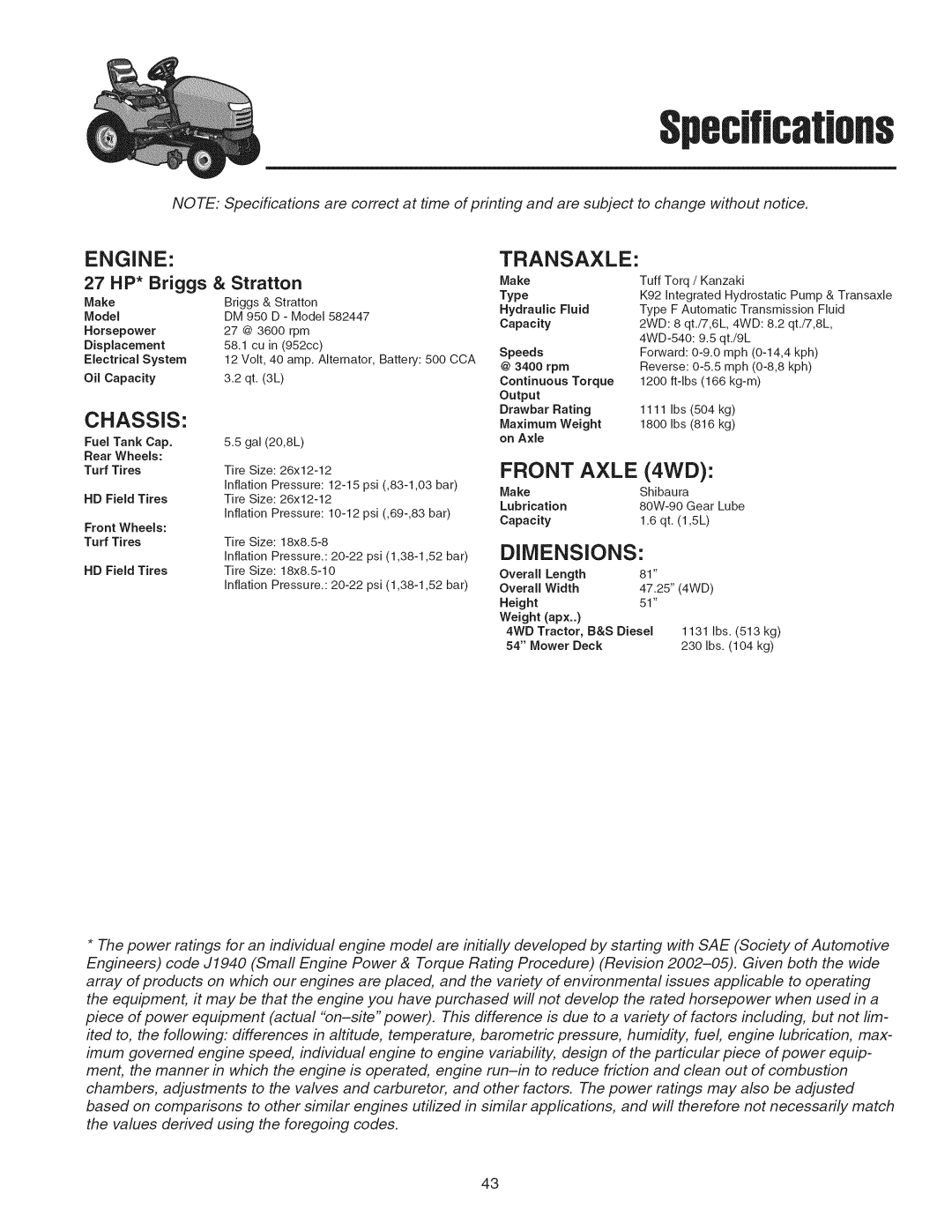2690629, 2690628 specifications
Snapper 2690628 and 2690629 are innovative lawn care solutions that have gained significant attention in the outdoor equipment market. These models are designed for homeowners who seek efficiency and reliability in their lawn maintenance routine. Featuring powerful engines and cutting-edge technology, they stand out as top contenders for those who prioritize performance and ease of use.One of the main features of the Snapper 2690628 and 2690629 is their robust engine performance. Both models are equipped with reliable Briggs & Stratton engines that provide ample power for tackling dense grass and tough terrain. This ensures that users can complete their mowing tasks quickly and efficiently, with minimal effort required.
These mowers are designed with ease of use in mind. The intuitive controls and ergonomic design allow for comfortable handling during extended mowing sessions. The push-button start feature eliminates the hassle of pulling cords, making it easier for users to get started. Furthermore, the adjustable cutting height feature gives users the versatility to achieve their desired grass length, whether they prefer a golfing green finish or a more natural look.
Another noteworthy technology is the mulching capability featured in both models. The Snapper 2690628 and 2690629 can effortlessly convert grass clippings into fine mulch. This not only reduces yard waste but also returns valuable nutrients to the soil, promoting a healthier lawn. Additionally, the side discharge option allows for efficient grass disposal, making it suitable for various mowing preferences.
Durability is another significant characteristic of the Snapper 2690628 and 2690629. Both models feature a sturdy steel deck that withstands the rigors of outdoor use, ensuring longevity. The rust-resistant finish further enhances their lifespan, allowing users to enjoy the benefits of their mowers for years to come.
In conclusion, the Snapper 2690628 and 2690629 represent a remarkable combination of power, technology, and user-friendly features. With their reliable engines, ergonomic designs, and practical mowing capabilities, they are ideal choices for homeowners looking to maintain a pristine lawn effortlessly. These models not only prioritize performance but also emphasize comfort and durability, making them valuable additions to any lawn care arsenal.

